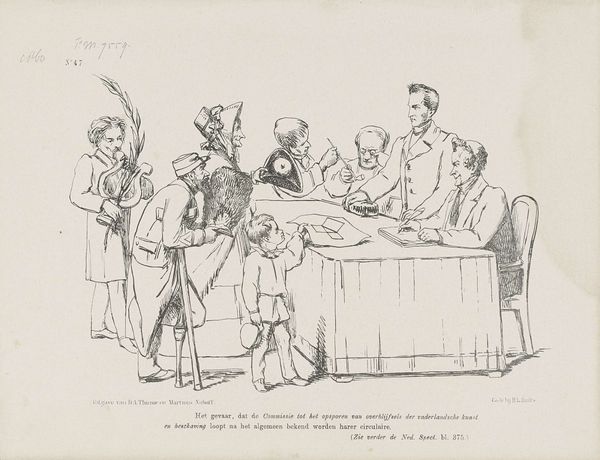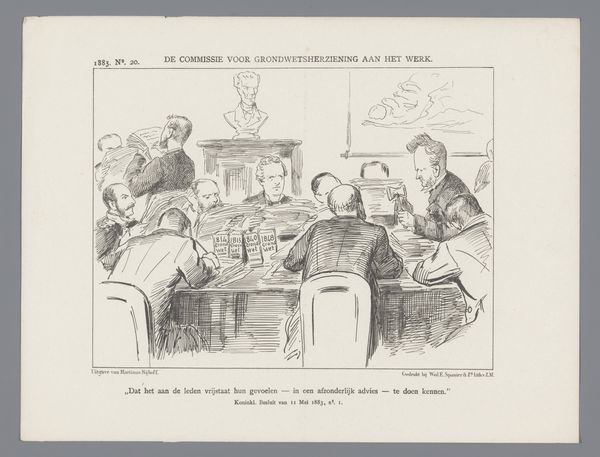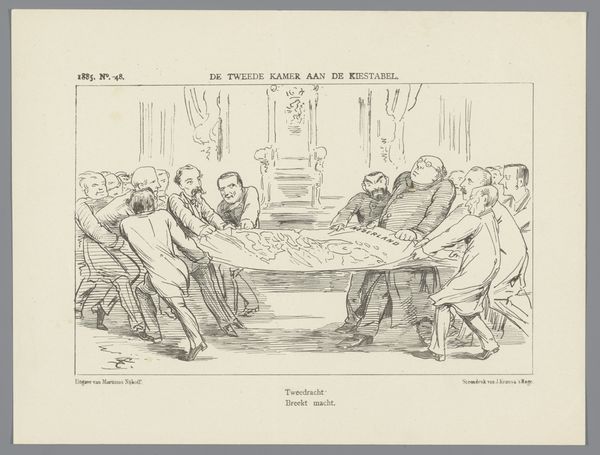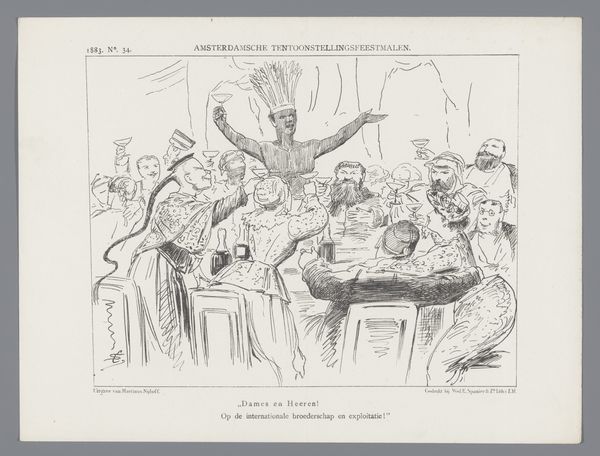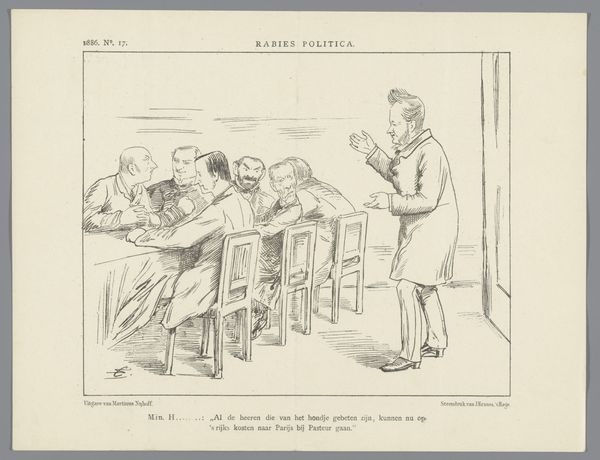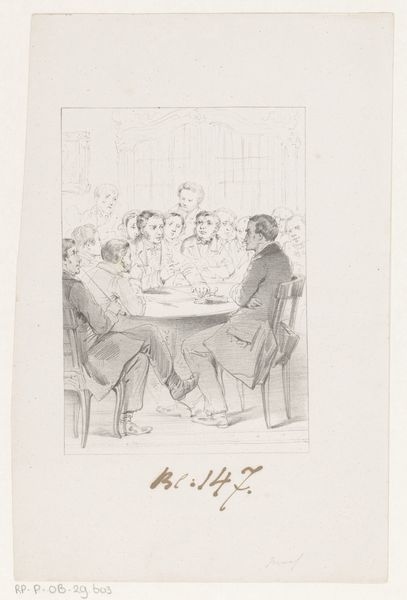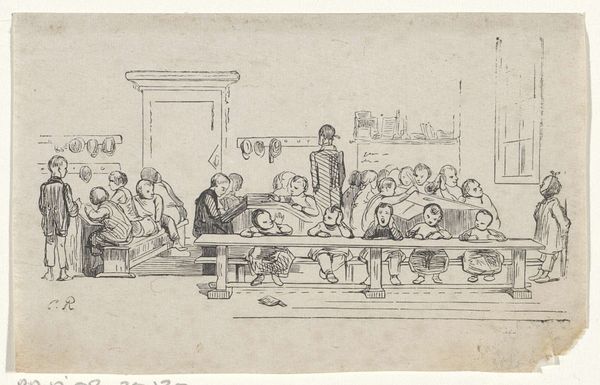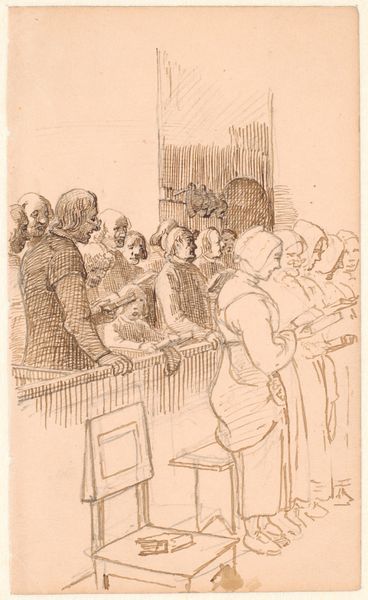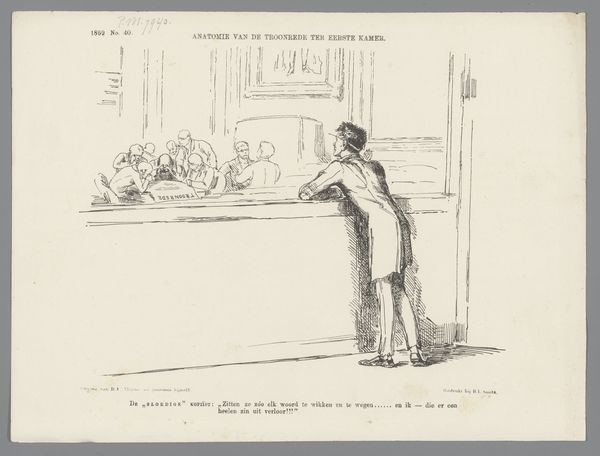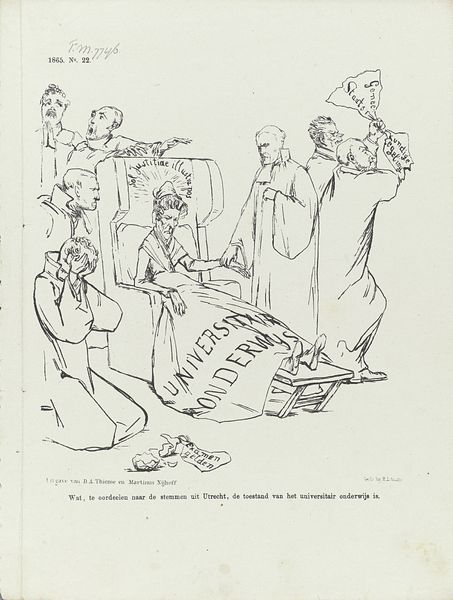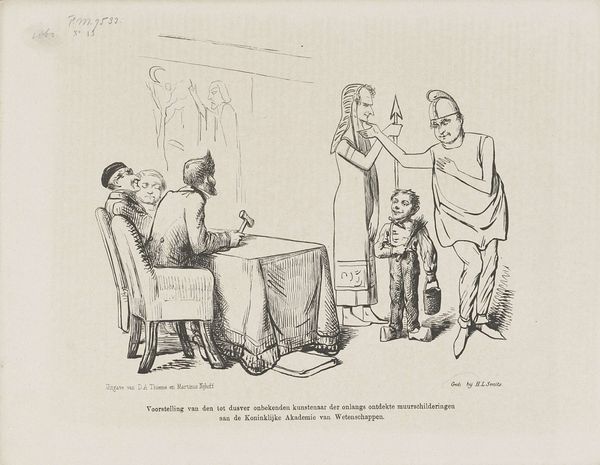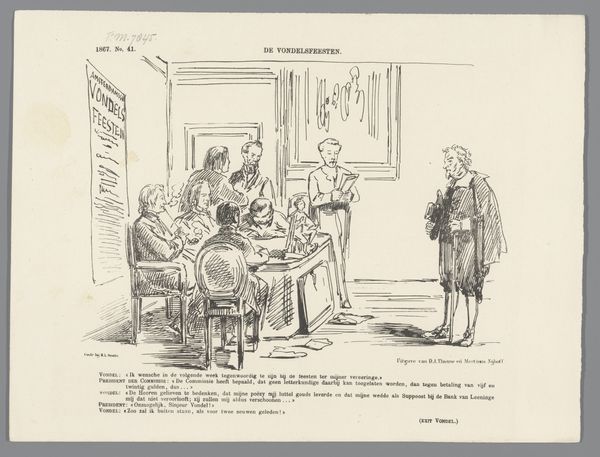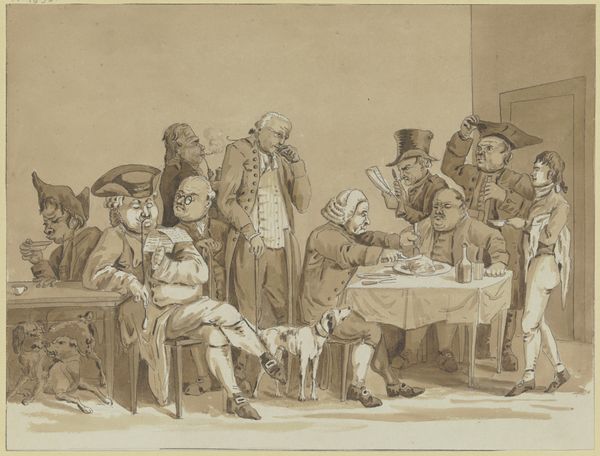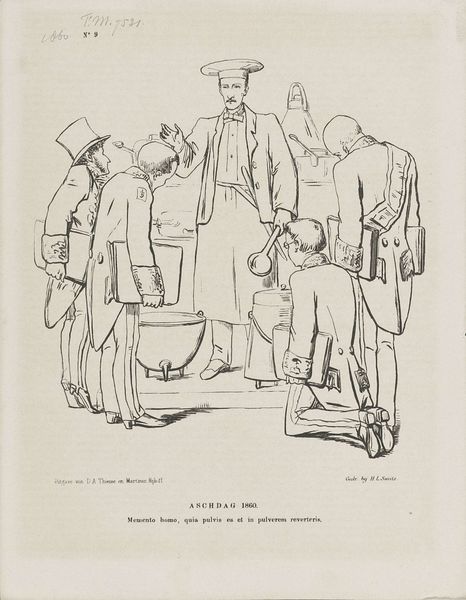
Dimensions: height 215 mm, width 275 mm
Copyright: Rijks Museum: Open Domain
Curator: Let's discuss this intriguing pen and ink drawing by Johan Michaël Schmidt Crans, titled "Spotprent op de Wet op het Hoger Onderwijs, 1860," created in 1860. Editor: Immediately, what strikes me is the composition – the way the artist uses stark lines and open space to create such a dramatic, almost theatrical scene. Curator: Yes, and considering the historical context, it's a potent critique. The title translates to "Cartoon on the Higher Education Act," so we know it's a direct commentary. I'm immediately drawn to the act of institutional critique through caricature here, in particular the figures arranged as if on trial or judgement. Editor: I notice how the garments worn by the figures create distinct structural shapes in the sketch: geometric robes with heavy falls, and more angular fitted clothing on those apparently in authority, each of which create depth and compositional relationships within the piece. Curator: Right, the contrasts within dress codes serve to reinforce socio-political messages about access and hierarchy. The men appear to be mocking scholarly pursuits and academic standards via the new Higher Education Act, thereby making light of institutional advancements in Dutch education and perhaps promoting access for the select few within an elitist social structure. Editor: And that mocking tone comes through purely in line and form; observe the subtle curves of their mouths, and their brow lines! The rendering may be swift, but each man possesses distinct facial qualities that communicate an acerbic emotional disposition. Curator: Exactly! It's about using humor as a weapon. By creating this tableau that depicts academia as both comical and severe, the artist challenges prevailing notions of education as the purported great equalizer and instead implicates systems in ongoing oppression and judgement of new academic and scholarly progress. Editor: For me, this rapid sketch reveals how fundamental artistic elements can create a very charged experience. The artist wields ink and pen, turning swift strokes into a surprisingly resonant moment, with structural clarity underscoring emotional and social undertones. Curator: Absolutely, the ability to connect broader power structures to a single captured instance offers a testament to the importance of artistic expression as a means to expose injustice, and critique norms. Editor: I am walking away with a stronger grasp on the artistic capacity of visual economy: here, a relatively minimal formal design wields maximal visual power.
Comments
No comments
Be the first to comment and join the conversation on the ultimate creative platform.
